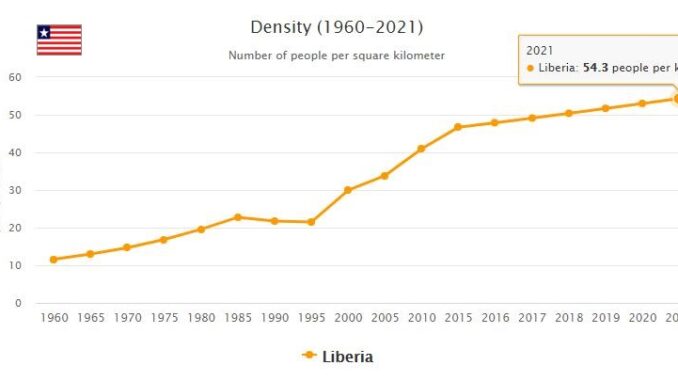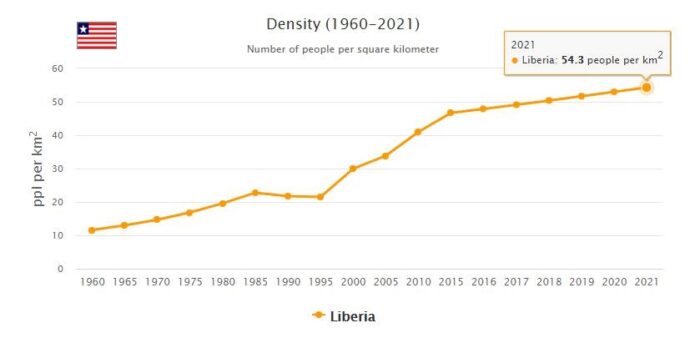
Yearbook 2013
Liberia. During the year, the issue of freedom of the press in Liberia was reactivated when, among other things, the independent newspaper FrontPage Africa (FPA) was forced to close. According to Countryaah, the country’s journalists’ association criticized the decision and further argued that the imprisonment of the newspaper’s editor-in-chief Rodney Sieh showed serious deficiencies in the justice system. After several months in the central prison in the capital Monrovia, Sieh was released in mid-November.
At the beginning of the year, the country’s former president Charles Taylor appealed his verdict at the International Criminal Court (ICC) in The Hague. The year before, the court sentenced Taylor to 50 years in prison for war crimes and crimes against humanity in connection with the civil war in neighboring Sierra Leone in 1991–2001.
During the spring, a review was made of the government’s trade relations, which specifically criticized the agreements the government has concluded with companies that exploit natural resources in the country. According to the audit, there is, among other things, extensive corruption between the government and the companies.
In March, President Ellen Johnson Sirleaf conducted a government reform that received criticism from several directions. The idea of the new government was to replace ministers accused of corruption. Only one minister was relocated at the same time as significantly more employees on lower positions within the government ministry were forced to leave their missions. During the year, the president received widespread criticism for not working hard enough against corruption within her own ranks.
At the same time as the government was accused of widespread corruption and lack of leadership at home, Liberia was named by the Mo Ibrahim Foundation as the country that has developed the most in the field of good leadership and governance over the past decade. According to The 2013 Ibrahim Index of African Governance (IIAG), which measures, among other things, the degree of security and human development, Liberia was the most developed country in Africa in the area since 2000. Despite measured progress, Liberia remains low in the foundation’s ranking compared to other African countries.
- According to AbbreviationFinder.org, Monrovia is the capital city of Liberia. See acronyms and abbreviations related to this capital and other major cities within this country.
In August, areas around Liberia’s capital Monrovia were shaken by a heavy flood, which was due to an unusually high rise in tidal levels. Several homes were swept away by the tidal wave and hundreds of people became homeless. According to the United Nations Development Program (UNDP), the problem is: linked to increased soil erosion affected by climate change, unregulated sand extraction and deforestation of mangrove forests near the coast.
Later in the fall, four people were arrested for smuggling large quantities of marijuana in the town of Bo Waterside near the border with neighboring Sierra Leone. One of the arrested was the chief executive of the president’s coroner, and the fact that the drugs were transported in a company car attracted much attention in the country’s media. According to the United Nations Crime and Drugs Agency (UNODC), drug smuggling is a growing problem in Liberia.
Population
The population, which at the 1974 census had registered 1,503,368 residents, continued to increase at an annual rate of 35% due to the reduction in infant mortality and the prolongation of the average life span. The 1984 census found 2,101,628 residents (with a ten-year increase of 40%), which became 2,607,000 at a 1990 estimate. The density therefore increased from 15 to 27 residents / km 2. As a result of the demographic explosion, Liberia is a country of young people, which the government only partially succeeds in educating: in fact, illiteracy still affects 61% of the residents.
The urban population increased from 27.6% in 1971 to 44.3% in 1989. This is mainly due to the development of Monrovia, which in ten years has almost tripled the number of residents, from 172,000 in 1974 to 465,000 in 1986. (22% statewide). The urban structure is typically monocentric, since the other centers are small (second city is Buchanan, with 24,000 residents). Monrovia has become a modern commercial, financial and port center. The recently urbanized rural masses flock to the peripheral shanty towns. The rural exodus has depopulated some inland counties (6 residents / km 2 in that of Grand Gedeh) to the advantage of the coastal ones (213 residents / km 2in that of Montserrado where the capital is located), once deserted due to unfavorable environmental conditions. Ethnic balances are also evolving, in which the major groups (Kpelle from 21 to 20%, Bassa from 16 to 14%), as well as religious ones, are losing ground due to the progress of Islam and Christianity on traditional religions.
